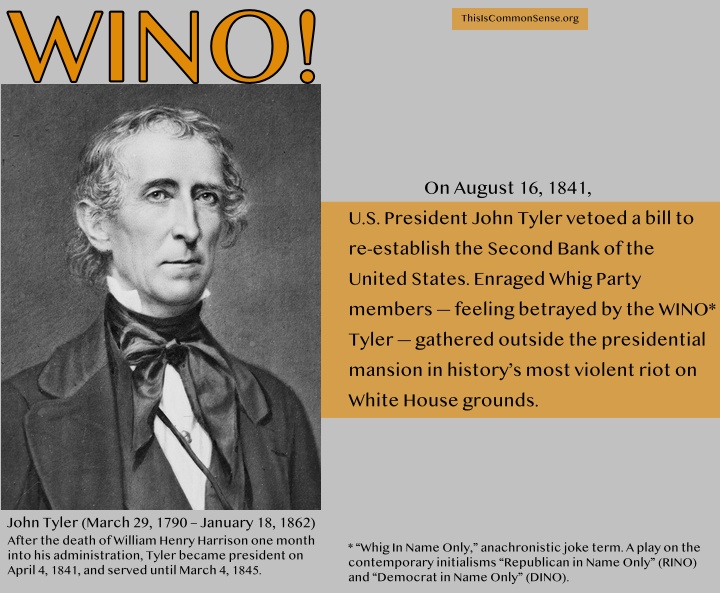On August 16, 1841, U.S. President John Tyler vetoed a bill to re-establish the Second Bank of the United States. This made him deeply unpopular with his former supporters in the Whig Party — which was the party of “internal improvements” as well as an anti-Jacksonian party, and Andrew Jackson had previously set himself against central banking. It is apparent that Tyler did this because he had come to believe a central bank was unconstitutional.
We have a central bank, now, of course. It is called the Federal Reserve.
